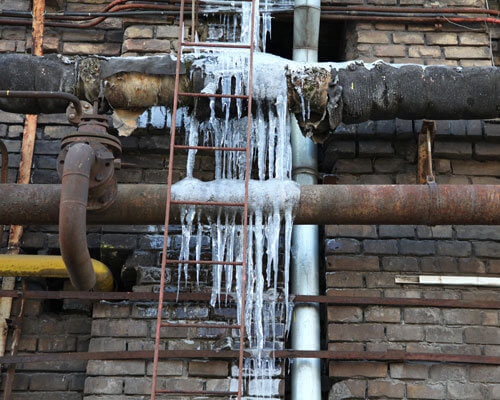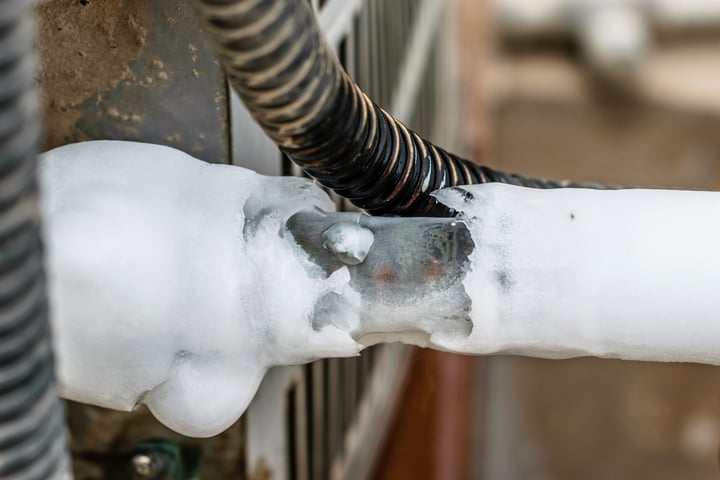My AC Pipe Is Frozen Solid - What Do I Do? Guidance for Resolution
My AC Pipe Is Frozen Solid - What Do I Do? Guidance for Resolution
Blog Article
Just about everyone may have his or her own perception on the subject of Have a Frozen AC Line? Here’s How to Fix It.

Intro
Uncovering that your air conditioner pipeline is frozen can be concerning, specifically during hot summertime when you count on your a/c unit the most. Comprehending what to do in such a situation is critical to avoid further damage to your air conditioning system and ensure your convenience indoors.
Comprehending the Causes
Numerous elements can contribute to the cold of an AC pipe. Comprehending these reasons can aid you address the problem successfully.
Absence of Airflow
One usual cause of a frozen air conditioning pipe is inadequate airflow. When the airflow over the evaporator coil is restricted, it can cause the coil to drop below freezing temperature level, bring about ice development on the pipe.
Low Refrigerant Levels
Insufficient refrigerant degrees in your air conditioning system can additionally result in an icy pipe. Reduced cooling agent degrees can cause the pressure in the system to go down, leading to the cold of moisture on the evaporator coil.
Winter Conditions
In chillier climates, freezing temperatures outside can contribute to the freezing of a/c pipes. If your AC system is not correctly shielded or if there are leaks in the ductwork, cool air can penetrate the system, causing the pipe to freeze.
Dirty Air Filters
Unclean or stopped up air filters can limit airflow in your air conditioning system, resulting in numerous concerns, including an icy pipeline. It's vital to replace or cleanse your air filterings system frequently to make sure proper airflow and stop ice buildup.
Signs of a Frozen Air Conditioning Pipe
Acknowledging the signs of an icy AC pipeline is vital for prompt action.
Decreased Airflow
If you notice a significant reduction in airflow from your vents, it can indicate a frozen pipeline.
Ice Buildup on the Pipe
Visible ice buildup on the refrigerant line or the evaporator coil is a clear sign of a frozen air conditioner pipe.
Odd Sounds from the Unit
Unusual noises, such as hissing or gurgling, coming from your a/c device can signal that there's ice present on the pipe.
Immediate Actions to Take
When faced with an icy a/c pipeline, it's essential to act rapidly to avoid additional damage to your cooling system.
Shutting off the air conditioning
The initial step is to turn off your air conditioning system to prevent the system from running and intensifying the problem.
Checking for Blockages
Examine the location around the interior device for any kind of blockages that might be blocking air movement, such as furnishings or curtains.
Thawing the Pipe
You can utilize mild methods like putting towels taken in warm water around the icy pipeline to assist thaw it gradually.
Preventive Measures
Taking safety nets can help stay clear of future incidents of a frozen air conditioner pipeline.
When DIY Methods Fail
If your efforts to thaw the pipeline or address other concerns are not successful, it's time to call a professional.
Value of Hiring a Professional HVAC Technician
A licensed HVAC technician has the knowledge and devices necessary to detect and fix concerns with your a/c system securely and properly.
Normal Maintenance Checks
Schedule regular upkeep contact an expert HVAC professional to make certain that your a/c system is running efficiently.
Altering Air Filters
On a regular basis change or cleanse your air filters to avoid air flow limitations and preserve ideal efficiency.
Protecting Exposed Pipes
If your AC pipelines are exposed to cool temperatures, think about insulating them to prevent freezing throughout winter months.
Seeking Professional Help
If DIY techniques stop working to settle the issue or if you're uncertain regarding exactly how to continue, it's ideal to look for aid from a qualified HVAC specialist.
Final thought
Handling a frozen a/c pipeline can be an irritating experience, yet understanding just how to respond can aid decrease damages and recover convenience to your home. By comprehending the reasons, identifying the signs, and taking prompt activity, you can successfully address the concern and stop future occurrences.
What to Do If Your AC Line Is Frozen
Make Sure All Supply and Return Air Vents Are Open
If you notice problems with airflow, the first thing you should do is check your supply and return vents. Supply vents distribute clean, conditioned air throughout your home. As this air becomes stale, it’s pulled into the return vent, where it’s reconditioned before being sent back out through the supply vent.
When these vents are closed, air won’t flow in the home. Before examining your AC, check the vents in every room and ensure they’re all open.
Check for a Dirty Air Filter
Another possible cause of limited airflow is a dirty air filter. Your air conditioner’s filters catch elements you don’t want to breathe in, such as dirt and dust. Over time, filters can become clogged, ultimately blocking air from flowing in and out. The lack of airflow can then cause the entire coil to freeze and will completely restrict any air from moving through it. The AC may need to be powered off for one to two days to allow the coil to thaw after replacing the filter to allow proper functioning of the unit. This debris can also accumulate on your AC’s evaporator coil, requiring a more serious repair. In general, air filters should be cleaned regularly (about every two weeks).
Assess Your Outdoor Unit
In addition to checking your AC, assessing the outdoor unit is a good idea. Also known as the condensing unit, it works with your interior unit to release heat outside. An issue with the outdoor unit can result in rising internal temperatures.
Overgrown Shrubs or Clogged Leaves
From leaves and twigs to shrubs and debris, there’s no shortage of outdoor elements that can accumulate around your condensing unit. When these elements get lodged inside the unit, they can block airflow. Fortunately, removing the blockage can solve the problem.
Sounds of a Broken Fan
Shrubs and leaves aren’t the only things that can impede your outdoor unit’s airflow. If the fan is broken, the unit won’t be able to properly get rid of heat — which means the internal temperature won’t go down. First, make sure the fan is spinning. If it is, check for the following sounds of a broken fan:
Buzzing Rattling Screeching Hissing Clicking Preventative Measures
Nobody wants to deal with a frozen AC line. In addition to causing problems with your air conditioner, they require professional repairs. On the bright side, there are preventative measures you can take to help ensure this issue doesn’t arise in the first place.
https://www.coopergreenteam.com/blog/what-to-do-if-ac-line-frozen

We had been made aware of that article on Why Is Ice On My Outside Air Conditione through someone on our other web page. Do you know anybody else who is intrigued by the topic? Please feel free to promote it. I am grateful for your time. Visit us again soon.
Go Deal Report this page